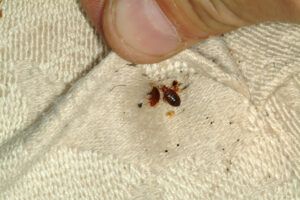Mechanical Pest Control In Germantown, MD
Disinsection, derivatization, and sanitation are all part of our extensive pest control service. The goal is to keep vector-pest agent populations under control by conducting comprehensive surveillance that includes reports, inspections, and monthly treatments. We are using antibiotics or rodenticides that are both safe and non-toxic.
Manipulation of the factors that restrict each pest’s reproduction and survival potential is the key to successful pest elimination. Pesticides are rarely used, but sanitation is favored as a control method to reduce risk and harm to humans and the environment.
To mitigate the economic risk to the customer, the service provides extensive pest management (IPM), which includes preventive and corrective steps to eliminate the existence of vectors.
What Is Mechanical Pest Control, And How Does It Work?
Mechanical pest control, when combined with the necessary application of an antibiotic or rodenticide, is one of the most important strategies for the elimination of insects and rodents in integrated pest management (IPM).
There are pest-removal procedures that are performed manually or with the aid of an instrument, as well as the use of any item that protects us from being harmed by pests directly or indirectly, such as our properties or harvests. Systematic degradation, physical barriers, protective bagging of at-risk fruits, special adhesives, non-flying insect trenches, and other methods are used. The most common techniques can be divided into three groups:
Using high-pressure water or air: Using methods based on high-pressure water or air is one way to eliminate the pest without removing damaged organs or after the infected fruits have been removed. Something as easy as a steady stream of water will sanitize the area and keep the insects out of the crops.
Barrier Exclusion: When used in combination with other tools such as insecticides, barrier exclusion is a particularly useful and efficient strategy. Installing sponges with special fungicides directly on the stem of the plant we want to handle is a good example of this strategy, as it prevents any harmful insects from climbing on it and destroying it. In our homes, we can use weather stripping (barriers under the doors) to keep cockroaches and mice out, as well as mosquito nets on the walls.
Traps and Adhesives: In mechanical pest control, different types of containers containing a lure and an insecticide that kills the insect, which is typically flying, are commonly used. The adhesive trap uses a pheromone-based lure to attract the insect and then traps it with glue that prevents it from escaping.
Other common techniques include light trapping and flying insect trenches. In the case of trenches, which are commonly used in crops, simple land preparation is necessary prior to the installation of the devices that drown or poison the insect.
The use of Brodifacoum in the bait in the form of rodenticide pellets in all internal or external areas of the home, trade, or enterprise, and the use of trap cages in cases as needed, at strategic locations out of the reach of children and pets, fumigates the house or enterprise for the elimination of rodents.
Mechanical Pest Control is a set of essential elimination techniques. But, in several situations, the idea is to combine many approaches through Integrated Pest Management (IPM), which is carried out by the major fumigation companies. Do you want to choose the most effective tool for eliminating pests? Remember that we are here to assist you at Universal Fumigation!


